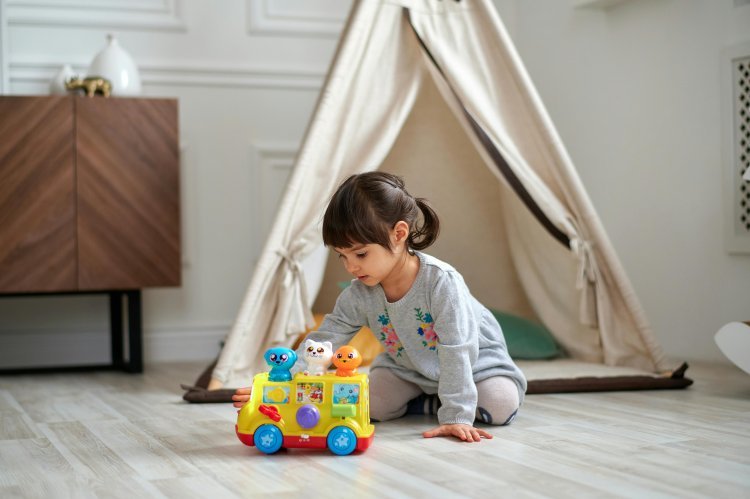Cultivating Creativity and Imagination in Child Care Programs

In today's rapidly evolving world, where innovation and creativity are highly valued skills, nurturing these qualities in children from an early age is more crucial than ever. Child care programs play a significant role in shaping the development of young minds, providing them with a nurturing environment where they can explore, learn, and grow. Cultivating creativity and imagination in child care programs is not only beneficial for the individual child but also for society as a whole. In this article, we delve into the importance of fostering creativity and imagination in child care settings, strategies for incorporating these elements into programs, and the long-term benefits they bring.
Understanding the Role of Child Care Providers
Child care provider, whether they are child sitter, daycare workers, or preschool teachers, play a pivotal role in the development of children under their care. Beyond ensuring children's safety and well-being, they serve as facilitators of learning and growth. Child care providers have a unique opportunity to create environments that encourage creativity and imagination, fostering a love for exploration and discovery in young children.
The Importance of Creativity and Imagination in Child Development
Creativity and imagination are fundamental aspects of child development. They enable children to think outside the box, solve problems creatively, and express themselves in innovative ways. Moreover, these skills are closely linked to cognitive, emotional, and social development. When children engage in imaginative play, they learn to understand the perspectives of others, develop empathy, and build interpersonal skills.
Research has shown that exposure to creative activities at a young age can have a profound impact on cognitive development. Children who engage in art, music, storytelling, and other creative pursuits tend to demonstrate enhanced problem-solving abilities, critical thinking skills, and academic achievement later in life. Additionally, fostering creativity and imagination in early childhood can spark a lifelong passion for learning and innovation.
Integrating Creativity and Imagination into Child Care Programs
Child care providers can take proactive steps to cultivate creativity and imagination in their programs. Here are some strategies for incorporating these elements into daily activities:
-
Create a Stimulating Environment
Design the child care environment to inspire creativity and imagination. Incorporate bright colors, diverse materials for art and sensory activities, and flexible spaces that encourage exploration and play. Ensure that children have access to age-appropriate toys, books, and art supplies that spark their curiosity and imagination.
-
Encourage Open-Ended Play
Provide ample opportunities for open-ended play, where children can engage in imaginative role-playing, building, and storytelling. Avoid overly structured activities that limit creativity and instead allow children to follow their interests and explore at their own pace. Encourage pretend play by providing props and costumes that inspire imaginative scenarios.
-
Embrace Diversity and Inclusion
Expose children to diverse perspectives, cultures, and experiences through books, music, art, and discussions. Celebrate individual differences and encourage children to express themselves authentically. Create an inclusive environment where all children feel valued and respected, fostering a sense of belonging and creativity.
-
Support Risk-Taking and Experimentation
Encourage children to take risks and experiment with new ideas, even if they make mistakes along the way. Provide opportunities for hands-on exploration and problem-solving, allowing children to learn through trial and error. Celebrate perseverance and resilience, emphasizing that failure is an essential part of the creative process.
-
Foster Collaboration and Communication
Promote collaboration and teamwork by encouraging children to work together on projects, solve problems collectively, and share ideas with their peers. Facilitate opportunities for group discussions, storytelling circles, and cooperative games that foster communication and social skills. Create a supportive community where children feel empowered to express themselves and learn from one another.
The Long-Term Benefits of Cultivating Creativity and Imagination
Investing in creativity and imagination during early childhood yields numerous long-term benefits for children, families, and society as a whole. Here are some of the lasting effects:
- Enhanced Problem-Solving Skills: Children who develop strong creative thinking abilities are better equipped to solve complex problems and adapt to new challenges throughout their lives.
- Improved Academic Performance: Creativity is closely linked to academic success, as it fosters critical thinking, innovation, and a passion for learning. Children who engage in creative activities tend to excel academically in various subjects.
- Increased Emotional Resilience: Creative expression provides children with a healthy outlet for processing emotions, reducing stress, and building resilience in the face of adversity.
- Fostering Innovation and Entrepreneurship: By nurturing creativity and imagination, child care programs lay the foundation for future innovators, entrepreneurs, and leaders who can drive positive change in society.
- Building Stronger Communities: When children are encouraged to think creatively and embrace diversity, they develop empathy, tolerance, and a sense of social responsibility, contributing to the creation of more inclusive and compassionate communities.
Conclusion
Cultivating creativity and imagination in child care programs is essential for promoting holistic child care and development and preparing children for success in an ever-changing world. By providing a nurturing environment that fosters exploration, experimentation, and self-expression, child care providers can empower children to unleash their full creative potential and become lifelong learners and innovators.
Remember, as child care providers, you have the power to shape the future by nurturing the creativity and imagination of the next generation. Embrace this opportunity with enthusiasm and dedication, and watch as children blossom into confident, creative individuals who will make a positive impact on the world.
What's Your Reaction?










![Wireless Connectivity Software Market Size, Share | Statistics [2032]](https://handyclassified.com/uploads/images/202404/image_100x75_661f3be896033.jpg)



